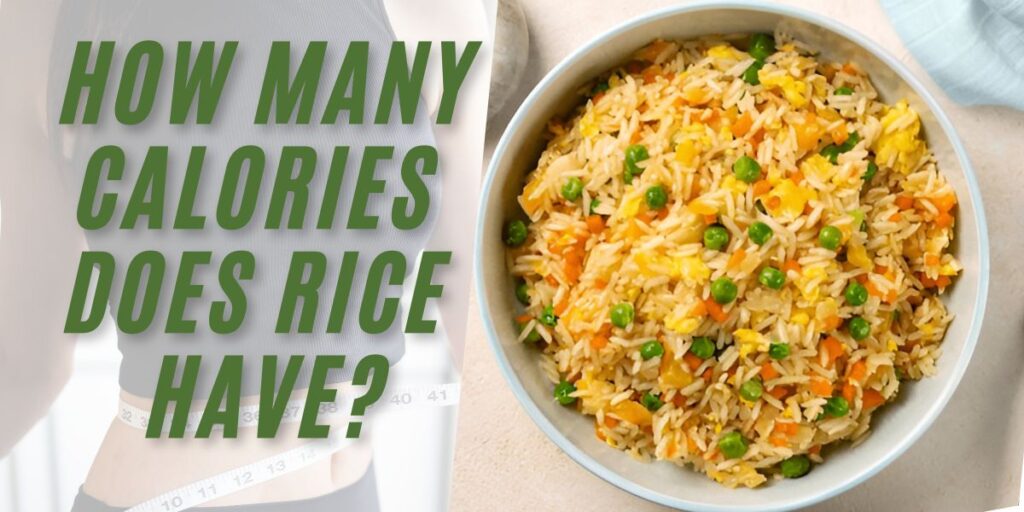


Rice serves as a primary energy source for billions of people around the world, and it is one of the most widely consumed staple foods in the world. This food is rich in carbohydrates and provides essential nutrients, making it an essential part of many diets. However, the rice calorie content varies depending on the type, processing method, and preparation. Making informed dietary choices can be made easier when you know which rice varieties contain what number of calories, no matter whether you are trying to lose weight, gain muscle, or maintain a balanced diet.
The calorie content of rice varies based on its type, processing, and cooking method. Additionally, below is a comparison of the most popular rice varieties and their calorie content per 100 grams.
| Rice Type | Calories (Uncooked) | Calories (Cooked) |
|---|---|---|
| White Rice | 365 kcal | 130 kcal |
| Brown Rice | 360 kcal | 111 kcal |
| Basmati Rice | 350 kcal | 120 kcal |
| Jasmine Rice | 356 kcal | 130 kcal |
| Wild Rice | 357 kcal | 101 kcal |
| Parboiled Rice | 350 kcal | 123 kcal |
| Black Rice | 335 kcal | 150 kcal |
| Red Rice | 360 kcal | 110 kcal |
The water in rice absorbs calories when it is cooked, so per 100 grams, rice has fewer calories. However, the total calories consumed depend on the portion size. For example:
Rice provides more than just energy it contains essential nutrients beneficial for health. Here’s a quick overview:
| Nutrient | White Rice (Cooked) | Brown Rice (Cooked) |
|---|---|---|
| Carbohydrates | 28g | 23g |
| Protein | 2.7g | 2.6g |
| Fiber | 0.4g | 1.8g |
| Fat | 0.3g | 0.9g |
| Iron | 0.2mg | 0.8mg |
| Magnesium | 12mg | 43mg |
Brown rice and wild rice are healthier alternatives as they retain more fiber and micronutrients, supporting digestion and heart health.
Rice can be a part of a balanced diet when consumed in moderation. Here are some healthy eating tips:
Stick to ½ to 1 cup of cooked rice per meal. Use measuring cups initially to train your eye for proper portions.
Combine rice with lean meats, beans, or tofu to create balanced meals with complete proteins.
Opt for brown, wild, or red rice which provide 2-3x more fiber and nutrients than white rice.
Use minimal oil (1 tsp per cup max). Steam or boil instead of frying to reduce unnecessary calories.
If you want to reduce your calorie intake, consider these alternatives:
| Rice Alternative | Calories per 100g (Cooked) |
|---|---|
| Cauliflower Rice | 25 kcal |
| Shirataki Rice | 10 kcal |
| Quinoa | 120 kcal |
| Barley | 123 kcal |
Using this rice calorie calculator, you can find out how many calories each variety of rice contains. Moreover, you can select the type of rice you want and enter how much you plan to consume.
Rice is an essential part of many diets, but its calorie content varies based on type and preparation. For a healthier choice, opt for whole-grain varieties like brown or wild rice and practice portion control. By making informed choices, you can enjoy rice while maintaining a balanced diet.
Looking for high-quality rice? Shah Enterprises provides premium rice varieties that meet international standards. Contact us for bulk purchases and export solutions!
Rice can support weight loss when eaten in moderation. Opt for brown or red rice as they’re high in fiber and keep you full longer.
One plate of cooked white rice (approx. 150g) contains around 200–250 calories, depending on portion size and cooking method.
Rice and bread both offer carbs, but whole grain rice is often healthier than white bread due to its fiber and nutrient content.
Brown, red, and black rice are among the healthiest. They’re rich in fiber, antioxidants, and nutrients that support digestion and heart health.
Not necessarily. 1 cup of cooked rice (approx. 200 calories) is fine if balanced with proteins, veggies, and overall calorie needs.
Brown rice is best for weight loss—low in calories, high in fiber, and helps regulate blood sugar and hunger.